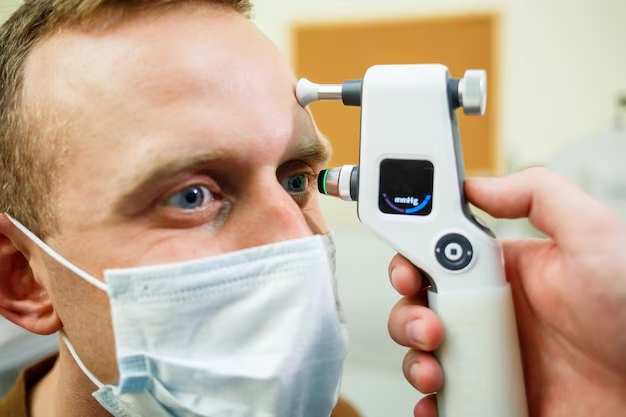How Quickly Do Cataracts Develop? A Comprehensive Overview
If you've been diagnosed with cataracts or suspect you might have them, you're likely wondering just how fast cataracts develop. Understanding this process can help you manage your expectations and plan for your eye health future. Cataracts, a common condition that clouds the eye's lens, can affect anyone, particularly as they age, but how rapidly they progress can vary widely.
⭐ What Are Cataracts?
Before we delve into the development speed of cataracts, let's clarify what they really are. Cataracts are a clouding of the eye's natural lens, which lies behind the iris and the pupil. For someone without a clear grasp on eye anatomy, picture this: it's as if you're trying to look through a foggy or frosted window. While cataracts might start small with minimal impact, over time, they can grow denser and disturb vision significantly.
Key characteristics of cataracts include:
- Cloudy or blurred vision: As the lens deteriorates, your eye's view becomes less clear.
- Difficulty with night vision: Lights, especially at night, can appear way too bright or cause halos.
- Fading of colors: Colors might start to look less vivid and more washed out.
- Increased glare sensitivity: Bright sunlight or streetlights at night can be increasingly harsh.
⏰ How Fast Do Cataracts Develop?
Cataract progression is generally a slow process. For most individuals, cataracts develop over a period of years rather than months. Several factors influence this timeline, including age, health, and lifestyle. Typically, cataracts associated with aging are known to progress gradually. However, some conditions, medications, or genetic factors can lead to quicker onset or progression. Here’s a breakdown of factors influencing cataract speed:
Age-Related Factors
Age is the most significant factor. Age-related cataracts form over a span of several decades, usually becoming noticeable around the age of 60, though initial microscopic changes start much earlier. Oftentimes, people may not even realize they have cataracts in the early stages.
Lifestyle and Habits
Certain lifestyle choices can influence how quickly cataracts develop. For example:
- Smoking and excessive alcohol consumption are associated with faster cataract progression.
- UV exposure: Prolonged exposure to ultraviolet rays without proper protection can also accelerate the process.
- Diet and Nutrition: A diet low in antioxidants can contribute to quicker onset.
Health Conditions
Underlying medical conditions, such as diabetes, influence cataract development rates. Diabetic individuals are more prone to earlier-onset cataracts and may experience faster progression. Other health issues that can expedite cataract formation include hypertension and certain medications like corticosteroids.
👁️ Types of Cataracts and Their Development Speeds
Understanding that not all cataracts are alike is crucial. They come in different forms, each with distinct characteristics and development speeds.
Nuclear Cataracts
These are common age-related cataracts that form deep in the nucleus of the lens. They usually progress slowly and are associated with aging.
Cortical Cataracts
These cataracts start in the cortex, the lens's periphery, and gradually work their way inward. They often result in noticeable light scatter, causing glare. Cortical cataracts can progress at a variable pace, sometimes quicker than nuclear cataracts.
Posterior Subcapsular Cataracts
These affect the back of the lens and can develop more rapidly. They are often seen in individuals with diabetes or those undergoing steroid treatments.
🔍 Recognizing and Monitoring Cataract Development
Whether you're observing early signs or living with mature cataracts, active monitoring is important. Here's how you can keep an eye on your eye health:
- Regular Eye Exams: Frequent eye checks are vital, especially if you’re over 60 or have risk factors. These exams help catch cataracts early and track their progression.
- Self-Monitor Symptoms: Notice any changes in your vision, like increased glare or difficulty with night vision. These might indicate changes in cataract development.
- Lifestyle Adjustments: Reducing exposure to risk factors can aid in slowing progression.
🌟 Practical Tips for Coping with Cataracts
Navigating life with cataracts might seem daunting, but here are some tips that can help improve daily living and vision clarity:
- Improve Lighting: Use brighter lights at home and work to reduce the strain on your eyes.
- Limit Night Driving: If glare is a significant issue, consider limiting night driving to avoid dangerous situations.
- Update Eyewear: Prescription glasses with anti-glare coatings can enhance your vision.
- Consider Surgery: Cataract surgery is a common and effective treatment to restore vision. It might be time to talk to an eye specialist if cataracts are seriously impacting your lifestyle.
📋 Summary of Cataract Development and Management
Here’s a quick reference to help you understand and manage cataract development:
| Factor | Impact on Cataract Development | Management Tips |
|---|---|---|
| Age | Increases risk and progression | Regular eye check-ups; monitor symptoms |
| Lifestyle | Smoking, alcohol, and UV light expedite onset | Quit smoking, limit alcohol, wear UV-protective eyewear |
| Health Conditions | Conditions like diabetes accelerate cataracts | Manage underlying health issues, frequent medical consultations |
| Cataract Type | Nuclear (slow), Cortical (variable), Posterior (fast) | Understand different impacts; consider options like surgery |
🤔 Final Thoughts
Cataracts are an almost inevitable part of aging but remember, their impact can be managed. The pace at which cataracts develop can vary widely, influenced by several personal, lifestyle, and health factors. Understanding what cataracts are and how they develop is essential to making informed decisions regarding your eye health. Monitoring your symptoms, making proactive lifestyle changes, and seeking professional guidance when needed can help maintain your quality of life, allowing you to see clearly and live fully.
Remember: It's essential to consult with an eye care professional to explore the best personal options regarding cataracts and their treatment.
By knowing these insights and strategies, you're better equipped to navigate the journey of cataract development, ensuring your vision remains as clear as possible.
